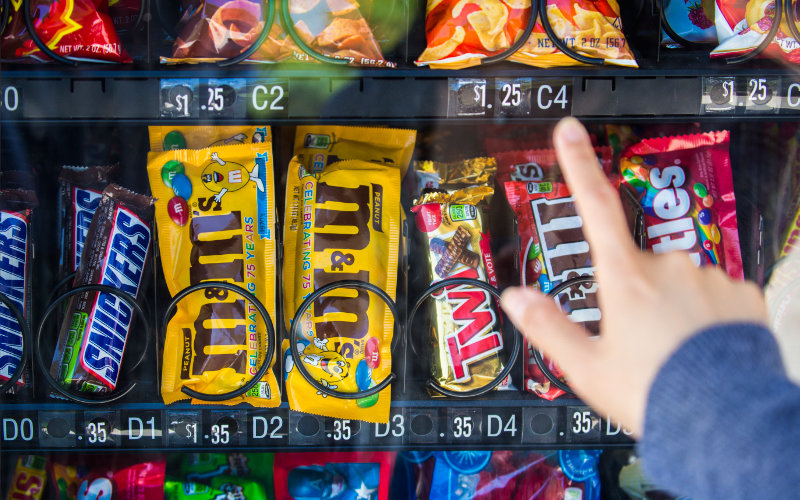
Do students consider nutrition when reaching for a soda, chips or a granola bar? Pimbucha Rusmevichientong, a Cal State Fullerton assistant professor of health science, is leading several studies to better understand how food labeling affects college students’ purchasing decisions.
Four students are assisting with the research project, from developing questions to designing the online survey, and 500 CSUF undergraduates will be invited to participate this fall.
A New FDA Label
The first study will measure how well students understand the U.S. Federal Drug Administration’s (FDA) new nutrition facts label announced May 20. The current label has been in effect for more than 20 years.
“The FDA believes the current version of the nutrition facts label provides too much information for the average consumer, and that most people only pay attention to a few items like the serving size, calories per serving size and some macro-nutrients,” said Rusmevichientong. “We plan to test how well college students understand both the current and new version of the FDA label, as well as an alternative version.”
The new label features the total calories in a larger font, updates the serving size calculation, displays added sugars, includes gram amounts for vitamin D and potassium, and removes calories from fat and amounts of vitamins A and C.
Most manufacturers will have until July 26, 2018, to comply with the updated FDA label.
The Exercise Equivalent
The second study will evaluate how well students understand the absolute value of the calories they consume.
“Even though the FDA now requires fast food chains like Starbucks and McDonald’s to post the total calories on the menu, I believe consumers don’t really understand what this means,” said Rusmevichientong. “Many people will see 600 calories and ask, ‘Is that a lot?’ or ‘How many calories am I allowed to have?'”
Including an exercise equivalent — for example, how many minutes you would need to run to burn off a 140-calorie can of Coke — may increase consumers’ understanding of caloric value and influence their choices.
“If you are thinking about eating a Snickers bar, and you know you will have to run for 25 minutes to burn it off, would you still purchase it? We hypothesize that with the exercise equivalent, students’ level of guilt will increase and their willingness to buy will decrease,” she said.
Health Message Framing
The third study will assess whether subjective terms, like “all natural” or “fat free,” on food packaging in vending machines affects students’ decision-making.
“Nowadays, most people do care about their health and diet,” said Rusmevichientong. “The food and beverage industry tries to take advantage of this by giving consumers irrelevant nutrition information.”
Such terms are examples of “health claim framing,” a tactic that advertisers use to position their products as nutritious.
“A good example is gummy bears, which are often advertised as ‘fat free’ or ‘made with real fruit juice’ to make consumers think the product is healthy,” she said. “M&Ms might be advertised as having ‘zero cholesterol,’ but what these packages don’t mention is the high sugar content.”
College Students’ Snacking Behaviors
Another study aims to better understand the factors that influence a student when making vending machine purchases, and will be conducted with Jessica Jaynes, assistant professor of mathematics, and Sanam Kazemi, lecturer in health science.
Students will be presented with several hypothetical vending machine snacks featuring a mixed combination of attributes, such as convenience, taste, price and nutrition. They will have the opportunity to select a snack or opt out.
“This innovative discrete choice experiment more closely resembles a real-world purchasing decision,” said Rusmevichientong. “With this model, we will be able to understand which factors are the most important to students.”
Using this same technique, the researchers will conduct a fifth study to determine which nutrition elements are most likely to influence students’ consumption, ranging from total calories to fiber, sodium and fat content.
“We need to understand how much students know about nutrition information so we can better educate them on how to make healthy decisions,” she said.